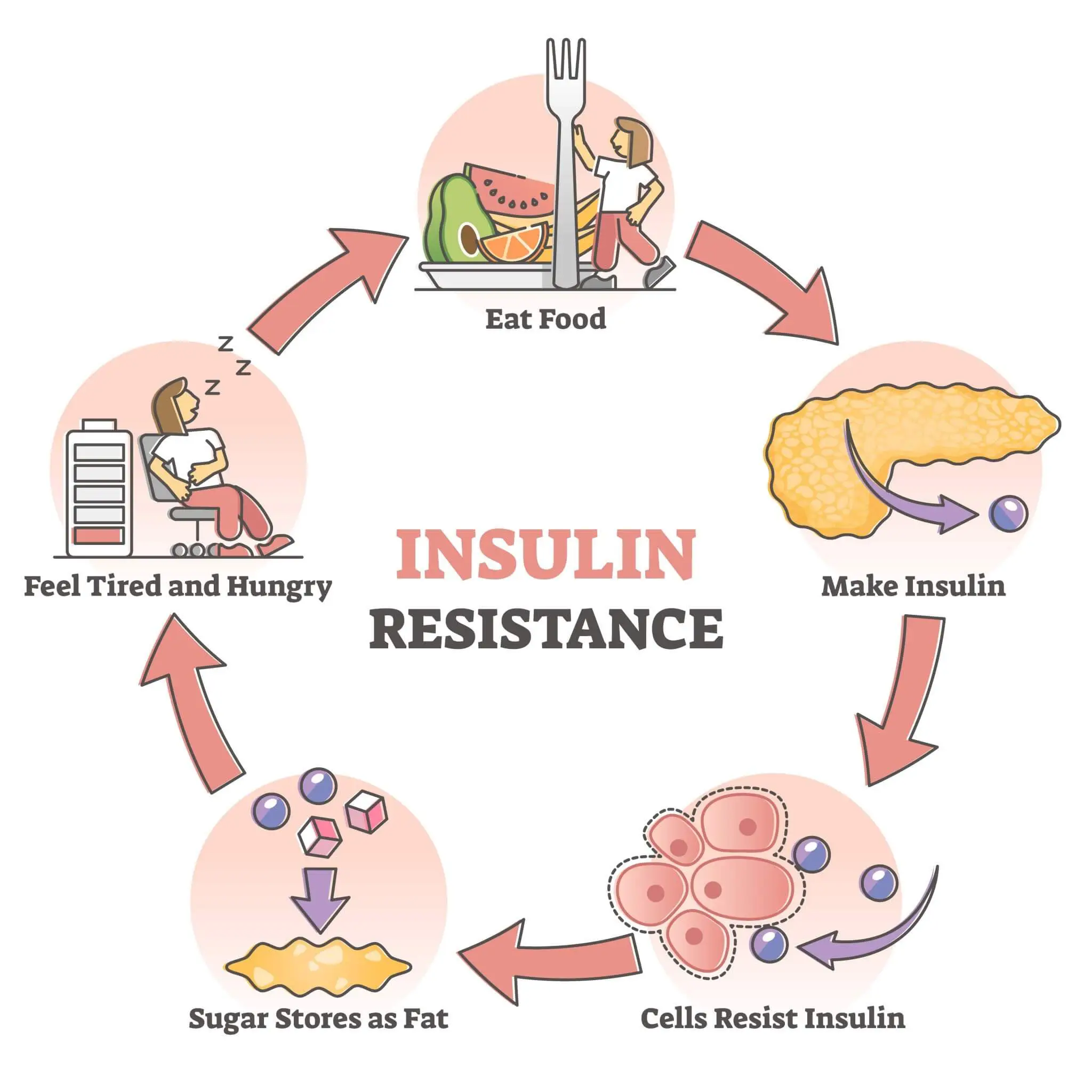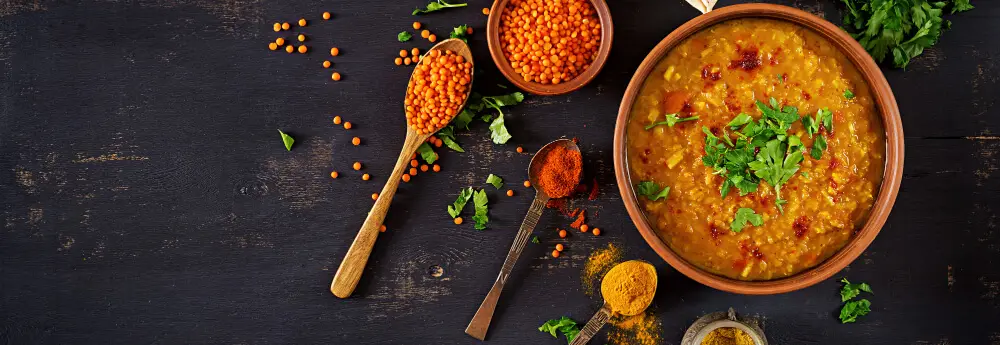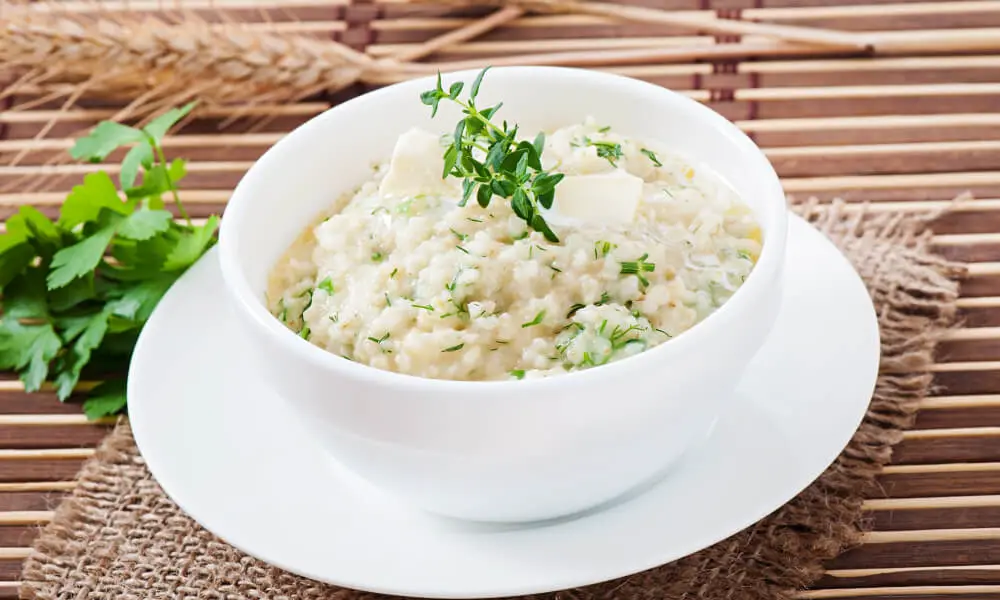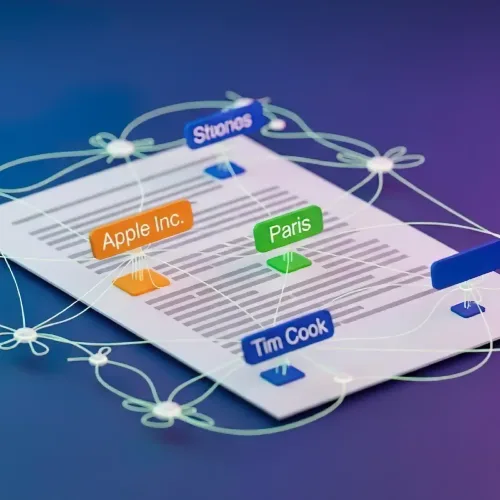Ever wondered how your daily meals quietly influence your blood sugar levels? Every bite you take affects how your body handles glucose. Learning about nutrition for diabetes isn’t about giving things up, it’s about gaining control through knowledge. Diabetes and prediabetes are growing fast across South Asia. In Pakistan, almost one in four adults is living with one of these conditions. But here’s the hopeful part: your diet can actually make a difference.
In this guide, you’ll explore the science behind blood sugar control in a clear, easy way. You’ll find diet tips that actually work. You will also get a complete 7-day meal plan. This plan is filled with affordable, local recipes you can start using right now. Let’s make managing diabetes simpler, one meal at a time.
Nutrition for Diabetes: Understanding the Link Between Diet, Diabetes, and Prediabetes
Before we talk about what to eat, let’s understand what’s happening inside our body. This knowledge will help us to make smarter food choices every single day.
What Happens in the Body
Our body breaks food into different nutrients when we eat. One of the most important nutrients is glucose. It is a type of sugar that gives us energy. This glucose moves into our bloodstream, ready to fuel our cells. That’s when insulin comes into play.

Consider insulin as a key and our body’s cells as locked doors. Insulin’s job is to unlock those doors. This allows glucose to move from the blood into the cells. In the cells, glucose is turned into energy. This process helps to keep our blood sugar levels steady and balanced.
But in prediabetes, and later in Type 2 diabetes, the locks start getting rusty. This is known as insulin resistance. The key (insulin) doesn’t work as well anymore. The body produces extra insulin to try to get glucose inside the cells. Over time, the pancreas struggles to keep up. As a result, more sugar stays in the bloodstream. It is not being used for energy.
This ongoing rise in blood sugar is what leads to diabetes. The conceptual diagram illustrates the role of insulin resistance. It separates a healthy body from one dealing with prediabetes or diabetes.
Why Nutrition Plays the Central Role
What we eat directly controls how much glucose enters our blood. It also determines how much effort our insulin needs to keep it balanced. Each macronutrient — carbohydrates, proteins, and fats — affects our blood sugar in its own unique way.
- Carbohydrates have the biggest and fastest impact. They are broken down directly into glucose.
- Protein has a moderate, slower effect on blood sugar.
- Fats have the least direct impact on blood sugar. However, they can slow digestion. Certain types of fats impact insulin sensitivity over time.
Nutrition sits at the heart of diabetes care. When you eat the right balance of foods, your body releases glucose more slowly. This gives your cells time to respond and improves their insulin sensitivity. This balance is measured through the glycemic index (GI). It is also measured by the glycemic load (GL). These are tools that show how quickly food raises your blood sugar. Foods with a low GI release sugar gradually, helping you keep stable energy and better blood sugar levels. The science behind a “balanced meal” is simple. You should combine protein and fiber with carbohydrates. This combination slows digestion. It allows your blood glucose to stay steady and controlled.
Science-Based Nutrition Rules for Diabetes & Prediabetes
Let’s break down the essential nutrition rules. Each one is backed by science and easy to follow.
1. Choose Complex Carbs over Refined Sugars
Our body uses carbohydrates as its main source of energy, but not all carbs work the same way.
Refined carbs, like white sugar and white flour, don’t contain fiber. They digest superfast and cause your blood sugar to spike within minutes. Foods like white bread, pastries, sugary drinks, and white rice fall into this category.
Complex carbohydrates, on the other hand, are our body’s real energy partners. They’re packed with fiber, which slows down digestion. As a result, our blood sugar rises gently and stays stable for longer.
Fiber plays a key role here. It turns into a gel-like substance in our digestive system, slowing the absorption of glucose into our blood. Plus, it nourishes the good bacteria in our gut, the ones that help balance our metabolism.
So, make smarter swaps. Choose brown rice instead of white. Go for whole wheat roti instead of refined flour. Add oats, barley, quinoa, and lentils to your meals. These foods keep your energy steady and your blood sugar in check.
Science backs this up. People who eat more whole grains enjoy better glucose control. They also have a lower risk of diabetes.
2. Focus on Lean Proteins and Plant Sources
Protein plays a crucial role in managing diabetes. Unlike carbohydrates, it doesn’t cause a rise in blood sugar levels. It also helps us stay full and satisfied for longer.
When you combine protein with carbohydrates, it slows down how quickly your body absorbs glucose. This helps prevent sudden spikes in blood sugar after meals, keeping your blood sugar levels steady and easier to control.
The best options are lean protein sources like chicken breast, fish, eggs, and legumes. These foods give us the protein our body needs without adding too much saturated fat.
Plant-based proteins are also amazing choices. Lentils, chickpeas, kidney beans, and black beans offer not only protein but also fiber. This powerful combo supports better blood sugar control and overall health.
In Pakistan and across South Asia, dal (lentils) stands out as a true nutritional gem. Just one cup of cooked dal provides about 18 grams of protein. It also gives 15 grams of fiber. Both nutrients help keep blood sugar stable.
Fish like rohu, tilapia, and mackerel are also excellent picks. They contain omega-3 fatty acids that reduce inflammation and improve how your body uses insulin. Try to include fish in your meals at least twice a week for the best results.
3. Add Healthy Fats
For a long time, people thought avoiding fats was the best way to manage diabetes. However, that idea turned out to be wrong. In fact, healthy fats can actually protect our body.
Monounsaturated fats (MUFAs) help our cells to use insulin more effectively. You can find them in olive oil, avocados, and nuts.
Omega-3 fats work deeper, reducing inflammation inside your cells. Since inflammation makes insulin resistance worse, lowering it helps you keep your blood sugar stable. You’ll get plenty of omega-3s from fish, walnuts, chia seeds, and flaxseeds.
Try cooking with olive oil or mustard oil instead of ghee or butter. Snack on a small handful of almonds or walnuts, and sprinkle ground flaxseed over your morning oatmeal.
But remember, even healthy fats are high in calories. Use oils in small amounts and measure your nuts before eating.
Studies on the Mediterranean diet have shown that people who eat more healthy fats manage diabetes better. Their blood sugar levels improve, even without cutting carbs too much.
4. Focus on Portion Control
Even healthy foods can raise our blood sugar if we eat too much of them. The size of your portions directly affects your blood sugar response. Your body can only handle a limited amount of glucose at one time. When you overeat—even healthy, low-GI foods—your blood sugar can still spike.
To manage this easily, try the Plate Method. Fill half your plate with non-starchy vegetables, one-quarter with lean protein, and the last quarter with complex carbs.
For Indian or Pakistani meals, this could look like half a plate of salad and cooked vegetables. Another option is one-quarter dal or chicken. You could also have one-quarter brown rice or two small whole wheat rotis.
Meal timing also plays a big role. Eating smaller, more frequent meals helps prevent big jumps in blood sugar. For most people, three balanced meals and one or two small snacks throughout the day work best.
Pay attention to your hunger cues. Eat slowly and stop when you feel satisfied, not stuffed. This simple habit can greatly improve your blood sugar control and overall energy.
5. Hydration and Sleep Matter Too
Nutrition isn’t just about what we eat, it’s about how we live. What we drink and how well we rest play a big role in controlling blood sugar.
When your body doesn’t get enough water, glucose becomes more concentrated in your blood. Your kidneys then work overtime to remove the excess sugar. Staying hydrated helps keep your blood sugar in a healthy range.
Try to drink 8–10 glasses of water every day. Herbal teas and plain sparkling water are great choices too. But skip sugary drinks — they act like instant glucose bombs in your body.
Lack of sleep also affects our blood sugar. When we don’t sleep enough, our stress hormone cortisol goes up. High cortisol makes our body more resistant to insulin, which raises blood sugar levels. Studies show that adults with diabetes who sleep less than six hours a night often struggle with poor glucose control.
Getting good-quality sleep supports our metabolism and helps our body use insulin more effectively. Aim for 7–9 hours of steady, restful sleep each night.
These small habits may seem simple. Drinking enough water, sleeping well, and eating smart make a big difference in managing diabetes naturally.
Nutrition for Diabetes: Comparing the Most Effective Dietary Approaches
Many people get confused about which diabetic diet is the best. In reality, several diets are proven by science to work well. The real goal is to find one that fits your lifestyle and that you can stick to. Check out the table below to see how the most popular, research-backed diets compare.
| Diet Type | Core Idea | Science Evidence | Best For |
|---|---|---|---|
| Plate Method | Balanced plate, portion control | ADA-approved, universally adaptable | General diabetes control, beginners |
| Low-Carb Diet | Reduces carb intake drastically (usually <130g/day) | Strong evidence supports quick glucose control and weight loss | Weight loss, severe insulin resistance |
| Mediterranean Diet | High intake of vegetables, legumes, whole grains, olive oil, and fish | Strong evidence base for long-term heart & glucose health | Long-term lifestyle changes, cardiovascular protection |
| Low-GI Diet | Choose low-GI foods (slow absorption) regardless of total carb amount | Improves post-meal sugar levels and lipid profile | People with high post-meal sugar spikes |
Pro Tip:
Not every diet fits everyone, the right one is the one you can sustain. Focus on principles like low-GI foods and portion control rather than rigid restrictions. For a more detailed breakdown of these diets, The Diabetes Diet Book provides clear explanations. It also includes meal planning strategies and helpful exercises.
7-Day Meal Plan for Diabetes: Complete Nutrition Guide for Better Blood Sugar Control
This diabetes meal plan uses affordable South Asian staples. Each day ~1,600–1,800 calories, 45–50% carbs (mostly low-GI), 20–25% protein, 25–30% fat. Adjust portions for activity.
1st Day
- Breakfast: Oats & Chia Raita (recipe below) – 40g carbs, 12g protein, 8g fat, 300 kcal
- Lunch: Spiced Chana Dal Bowl with 1 whole-wheat roti – 55g carbs, 18g protein, 10g fat, 450 kcal
- Snack: 1 small apple + 10 almonds – 20g carbs, 4g protein, 10g fat, 180 kcal
- Dinner: Grilled Rohu with Masala Salad – 35g carbs, 30g protein, 12g fat, 420 kcal
2nd Day
- Breakfast: 2 boiled eggs + 1 whole-wheat toast + cucumber – 30g carbs, 18g protein, 12g fat, 320 kcal
- Lunch: Vegetable Soup with Olive Oil + ½ cup brown rice – 45g carbs, 10g protein, 10g fat, 380 kcal
- Snack: Greek yogurt (unsweetened) 100g + 5 walnuts – 10g carbs, 10g protein, 12g fat, 200 kcal
- Dinner: Paneer & Spinach Wrap (2 small rotis) – 50g carbs, 22g protein, 15g fat, 480 kcal
3rd Day
- Breakfast: Moong dal cheela (2) + mint chutney – 35g carbs, 15g protein, 8g fat, 310 kcal
- Lunch: Chickpea Stir Fry + 1 roti – 55g carbs, 16g protein, 12g fat, 460 kcal
- Snack: Carrot sticks + 1 tbsp peanut butter – 15g carbs, 5g protein, 8g fat, 160 kcal
- Dinner: Lentil Khichdi with Yogurt – 60g carbs, 14g protein, 6g fat, 420 kcal
4th Day
- Breakfast: Barley porridge with milk (low-fat) + berries – 45g carbs, 12g protein, 5g fat, 320 kcal
- Lunch: Grilled chicken (100g) + quinoa (½ cup) + sautéed greens – 40g carbs, 35g protein, 10g fat, 480 kcal
- Snack: 1 guava – 15g carbs, 2g protein, 0g fat, 70 kcal
- Dinner: Mixed veg curry + 1 bajra roti – 50g carbs, 10g protein, 8g fat, 380 kcal
5th Day
- Breakfast: Besan cheela with spinach – 30g carbs, 14g protein, 10g fat, 300 kcal
- Lunch: Fish curry (rohu) + ½ cup brown rice – 45g carbs, 28g protein, 12g fat, 450 kcal
- Snack: Buttermilk (chaas) spiced – 10g carbs, 6g protein, 2g fat, 90 kcal
- Dinner: Tofu stir-fry + cauliflower rice – 25g carbs, 20g protein, 15g fat, 350 kcal
6th Day
- Breakfast: Poha with peanuts & veggies – 45g carbs, 10g protein, 12g fat, 360 kcal
- Lunch: Rajma (kidney beans) + 1 roti – 60g carbs, 18g protein, 8g fat, 480 kcal
- Snack: 1 orange – 15g carbs, 1g protein, 0g fat, 60 kcal
- Dinner: Egg bhurji + 2 small rotis – 40g carbs, 20g protein, 15g fat, 420 kcal
7th Day
- Breakfast: Overnight oats with seeds – 40g carbs, 12g protein, 10g fat, 330 kcal
- Lunch: Dal tadka + barley (½ cup) + salad – 55g carbs, 15g protein, 8g fat, 430 kcal
- Snack: Handful roasted chickpeas – 20g carbs, 6g protein, 4g fat, 160 kcal
- Dinner: Vegetable stew + 1 whole-wheat roti – 45g carbs, 10g protein, 10g fat, 380 kcal
Click to Preview here! 7-Day Meal Plan.
7 Local & Affordable Recipes with Macros
Let’s dive into delicious recipes you can make at home. Each one is diabetes-friendly, budget-conscious, and packed with flavor.
1. Spiced Chana Dal Bowl with Brown Rice
Prep Time: 10 minutes | Cook Time: 30 minutes | Serves: 4
Ingredients:
- 1 cup chana dal (split chickpeas), soaked
- 1/2 cup brown rice
- 1 medium onion, chopped
- 2 tomatoes, chopped
- 2 tsp olive oil
- 1 tsp cumin seeds
- 1/2 tsp turmeric
- 1 tsp coriander powder
- Salt and pepper to taste
- Fresh cilantro for garnish
Instructions:
Cook brown rice according to package directions. Set aside. Heat olive oil in a pot. Add cumin seeds until they sizzle. Then add onions and sauté until golden. Add tomatoes, turmeric, and coriander powder. Cook until tomatoes soften. Add soaked chana dal and 3 cups water. Bring to boil, then simmer for 25 minutes until dal is tender. Season with salt and pepper. Serve dal over brown rice. Garnish with cilantro.
Nutritional Info (per serving): 340 calories | 54g carbs, 16g protein, 6g fat | Fiber: 12g
Glycemic Insight: Lentils release glucose slowly, perfect for stable energy. The fiber content keeps you satisfied for hours without blood sugar spikes.

2. Oats and Chia Raita Breakfast
Prep Time: 5 minutes (plus overnight soaking) | Serves: 2
Ingredients:
- 1 cup rolled oats
- 1 cup plain yogurt (low-fat)
- 2 tbsp chia seeds
- 1/2 tsp cinnamon
- 1 small apple, diced
- 1 tbsp chopped walnuts
- 1 tsp honey (optional)
Instructions:
Mix oats, yogurt, chia seeds, and cinnamon in a container. Stir well. Refrigerate overnight or for at least 4 hours. In the morning, stir and add diced apple and walnuts on top. Drizzle with honey if desired.
Nutritional Info (per serving): 280 calories | 38g carbs, 12g protein, 9g fat | Fiber: 10g
Glycemic Insight: Chia seeds absorb liquid and form a gel that slows digestion. Combined with oats’ soluble fiber, this breakfast provides steady energy until lunch.
3. Grilled Rohu with Masala Salad
Prep Time: 15 minutes | Cook Time: 15 minutes | Serves: 3
Ingredients:
- 3 rohu fish fillets (about 150g each)
- 1 tsp ginger-garlic paste
- 1 tsp red chili powder
- 1/2 tsp turmeric
- 1 tbsp lemon juice
- 1 tbsp olive oil
- Salt to taste
For Salad:
- 2 cups mixed greens
- 1 cucumber, sliced
- 1 tomato, diced
- 1/4 red onion, thinly sliced
- 2 tbsp olive oil
- 1 tbsp lemon juice
- Fresh mint leaves
Instructions:
Marinate fish with ginger-garlic paste, spices, lemon juice, and salt for 15 minutes. Brush fish with olive oil. Grill on medium-high heat for 6-7 minutes per side until cooked through. Toss salad ingredients with olive oil and lemon juice. Serve grilled fish over the fresh salad. Garnish with mint.
Nutritional Info (per serving): 280 calories | 8g carbs, 34g protein, 13g fat | Omega-3: High
Glycemic Insight: Fish provides zero carbs but excellent protein and omega-3s that reduce inflammation and improve insulin sensitivity.

4. Vegetable Soup with Olive Oil Drizzle
Prep Time: 10 minutes | Cook Time: 25 minutes | Serves: 4
Ingredients:
- 2 cups mixed vegetables (carrots, beans, cauliflower, peas)
- 1 medium onion, chopped
- 2 garlic cloves, minced
- 4 cups low-sodium vegetable broth
- 1 can diced tomatoes
- 1 tsp dried herbs (oregano, basil)
- 2 tbsp olive oil (for drizzle)
- Salt and pepper to taste
- Fresh parsley for garnish
Instructions:
Sauté onion and garlic in 1 tsp olive oil until fragrant. Add vegetables, broth, tomatoes, and herbs. Bring to boil. Reduce heat and simmer for 20 minutes until vegetables are tender. Season with salt and pepper. Serve hot with a drizzle of olive oil and fresh parsley.
Nutritional Info (per serving): 140 calories | 18g carbs, 4g protein, 7g fat | Fiber: 5g
Glycemic Insight: Non-starchy vegetables have minimal impact on blood sugar. The olive oil adds healthy fats for satiety without raising glucose.
5. Paneer and Spinach Wraps
Prep Time: 15 minutes | Cook Time: 15 minutes | Serves: 3
Ingredients:
- 200g paneer (cottage cheese), cubed
- 2 cups fresh spinach, chopped
- 3 whole wheat tortillas or rotis
- 1 small onion, sliced
- 1 tsp cumin seeds
- 1/2 tsp turmeric
- 1 tsp garam masala
- 2 tsp olive oil
- Salt to taste
- Mint-yogurt sauce for serving
Instructions:
Heat oil and add cumin seeds. Add onions and sauté until soft. Add spinach, turmeric, and garam masala. Cook until spinach wilts. Add paneer cubes and mix gently. Cook for 5 minutes. Season with salt. Warm tortillas or rotis. Fill with paneer-spinach mixture. Roll and serve with mint-yogurt sauce.
Nutritional Info (per wrap): 320 calories | 32g carbs, 18g protein, 14g fat | Fiber: 6g
Glycemic Insight: Whole wheat wrap provides complex carbs. Paneer adds protein that slows digestion and prevents blood sugar spikes.
6. Chickpea Stir Fry with Vegetables
Prep Time: 10 minutes | Cook Time: 15 minutes | Serves: 4
Ingredients:
- 2 cups cooked chickpeas (or 1 can, drained)
- 1 bell pepper, diced
- 1 cup green beans, chopped
- 1 carrot, julienned
- 1 medium onion, sliced
- 2 garlic cloves, minced
- 1 tbsp soy sauce (low-sodium)
- 1 tsp sesame oil
- 1 tbsp olive oil
- 1 tsp black pepper
- Fresh cilantro
Instructions:
Heat oils in a large pan or wok. Add garlic and onion. Stir-fry for 2 minutes. Add all vegetables. Stir-fry on high heat for 5-6 minutes until crisp-tender. Add chickpeas, soy sauce, and black pepper. Toss for 3 minutes. Garnish with cilantro. Serve hot.
Nutritional Info (per serving): 240 calories | 34g carbs, 11g protein, 7g fat | Fiber: 10g
Glycemic Insight: Chickpeas are a low-GI powerhouse. Combined with fiber-rich vegetables, this meal keeps blood sugar stable for hours.
7. Lentil Khichdi with Yogurt Side
Prep Time: 10 minutes | Cook Time: 30 minutes | Serves: 4
Ingredients:
- 1/2 cup moong dal (yellow lentils)
- 1/2 cup brown rice
- 1 small carrot, diced
- 1/2 cup peas
- 1 tsp cumin seeds
- 1/2 tsp turmeric
- 1 tbsp ghee or olive oil
- Salt to taste
- Fresh ginger, grated
- 1 cup plain yogurt for serving
Instructions:
Wash dal and rice together. Soak for 10 minutes. Heat ghee in pressure cooker. Add cumin seeds and ginger. Add dal, rice, vegetables, turmeric, and 3 cups water. Pressure cook for 3 whistles or cook covered for 25 minutes until soft and porridge-like. Season with salt. Serve warm with yogurt on the side.
Nutritional Info (per serving with yogurt): 310 calories | 48g carbs, 14g protein, 6g fat | Fiber: 8g
Glycemic Insight: This traditional comfort food combines lentils and rice for a complete protein. The probiotics in yogurt support gut health and glucose metabolism.

Nutrition for Diabetes During Ramadan: Smart Eating Tips for Safe Fasting
Fasting presents unique challenges for diabetes management. Here’s how to stay safe and maintain blood sugar control.
1. Smart Sehri (Pre-Dawn Meal) Strategies
Sehri is our fuel for the day. You should choose foods that release energy slowly. Start with complex carbs like oatmeal or whole wheat paratha. Add protein from eggs, cheese, or dal. Include healthy fats like nuts or olive oil. Avoid sugary foods and drinks at Sehri. They cause a quick spike followed by a crash. You’ll feel hungry and weak during the day. Stay hydrated. Drink plenty of water between Iftar and Sehri. Avoid excessive tea or coffee, they can dehydrate you.
Good Sehri example: Enjoy a vegetable omelet with whole wheat toast. Add a small bowl of yogurt with nuts. Include dates for natural sweetness.
2. Balanced Iftar (Breaking Fast) Approach
Break your fast gently. Don’t overwhelm your system with too much food at once. Traditional dates are perfect for Iftar. They give quick energy without overdoing it. Limit to 1-2 dates. Follow dates with water or soup. Wait 10-15 minutes before the main meal. This prevents overeating and reduces blood sugar spikes.
For the main Iftar meal, follow the Plate Method. Half vegetables, quarter protein, quarter complex carbs. Avoid fried foods, sugary desserts, and large portions. They cause dramatic blood sugar swings and make fasting harder the next day.
3. Hydration Throughout Non-Fasting Hours
Dehydration worsens blood sugar control. Drink water consistently from Iftar to Sehri. Set reminders to drink a glass every hour. Aim for 8-10 glasses total during non-fasting hours. Avoid sugary drinks completely. Skip fruit juices, eat whole fruit instead for fiber benefits. Herbal teas are excellent choices. They hydrate without adding calories or affecting blood sugar.
4. Critical Medical Considerations
Important: If you have diabetes and want to fast, consult your doctor first. Fasting can be dangerous without proper planning.
Your medications may need adjustment. Insulin timing must change. Blood sugar monitoring becomes essential. Know the warning signs: extreme thirst, dizziness, confusion, or blood sugar below 70 mg/dL. Break your fast immediately if these occur. Some people with diabetes shouldn’t fast at all. This includes those with poorly controlled diabetes, recent complications, or type 1 diabetes without expert guidance. Your health comes first. There’s no shame in not fasting if it risks your wellbeing.
Common Myths About Diabetes Nutrition
Misinformation can be dangerous when managing blood glucose control. Here are a few common myths debunked with quick science-backed replies.
- Myth 1: “Fruits raise blood sugar dangerously.”
- Fact: Fruits contain natural sugars (fructose) and valuable fiber and antioxidants. The fiber slows the sugar release. The key is amount control (e.g., one medium apple, not a whole bunch of mangoes) and choosing low-GI foods like berries and apples over higher-GI fruits like watermelon.
- Myth 2: “Diabetic diets are boring.”
- Fact: A diabetes-friendly diet simply follows the rules of sound metabolic health. It’s rich in flavor from spices, herbs, vegetables, and lean proteins, it’s essentially a healthy gourmet diet. Look at the recipes above!
- Myth 3: “Skipping meals helps.”
- Fact: Skipping meals can cause an early drop in blood sugar (hypoglycemia). It is followed by a rebound high (hyperglycemia) as the body releases stored glucose. Consistent meal timing is crucial for stable blood glucose control and preventing severe sugar fluctuations.
When to See a Doctor or Dietitian
While this guide provides expert, science-backed advice, it is not a substitute for professional medical guidance.
Seek professional guidance promptly if you experience any of the following red flags:
- Uncontrolled blood sugar readings (persistently high or frequent lows).
- Unexplained rapid weight loss or fatigue.
- A new diagnosis of prediabetes or diabetes.
- Uncertainty about how to adapt your current medication regimen to your diet.
A Registered Dietitian can help tailor a specific diabetes meal plan. This plan is based on your local preferences, budget, and lifestyle. It also considers your unique insulin resistance profile. Encourage professional guidance before making major lifestyle changes.
Conclusion
Managing diabetes or prediabetes comes down to three key habits: balance, consistency, and awareness. When you understand how different macronutrients affect your blood sugar, you take back control of your health. Choose complex carbs, lean proteins, and proper portions. Nutrition for diabetes works like your first line of medicine. So, make every meal a conscious, empowering choice that supports your body and your goals.
Save or share this guide — science is simpler when you understand it.
Recommended Resources for Curious Minds
If you want to explore more about the science and real-life ways to live a diabetic-friendly lifestyle, check out these highly recommended resources:
- The Diabetes Diet Book by Richard K. Bernstein MD
- Half Baked Harvest Cookbook by Tieghan Gerard
- Glucose Revolution by Jessie Inchauspé
- ADA Complete Guide to Diabetes by American Diabetes Association
References
- International Diabetes Federation. IDF Diabetes Atlas, 10th edition, 2021.
- American Diabetes Association. Standards of Medical Care in Diabetes—2023.
- Salas-Salvadó J, et al. PREDIMED trial. N Engl J Med. 2013.
- Reynolds A, et al. Carbohydrate quality and HbA1c. Lancet. 2019.
- NHS UK. Diabetes prevention and management guidelines.
- PubMed: PMID 31958490 (fiber meta-analysis).




